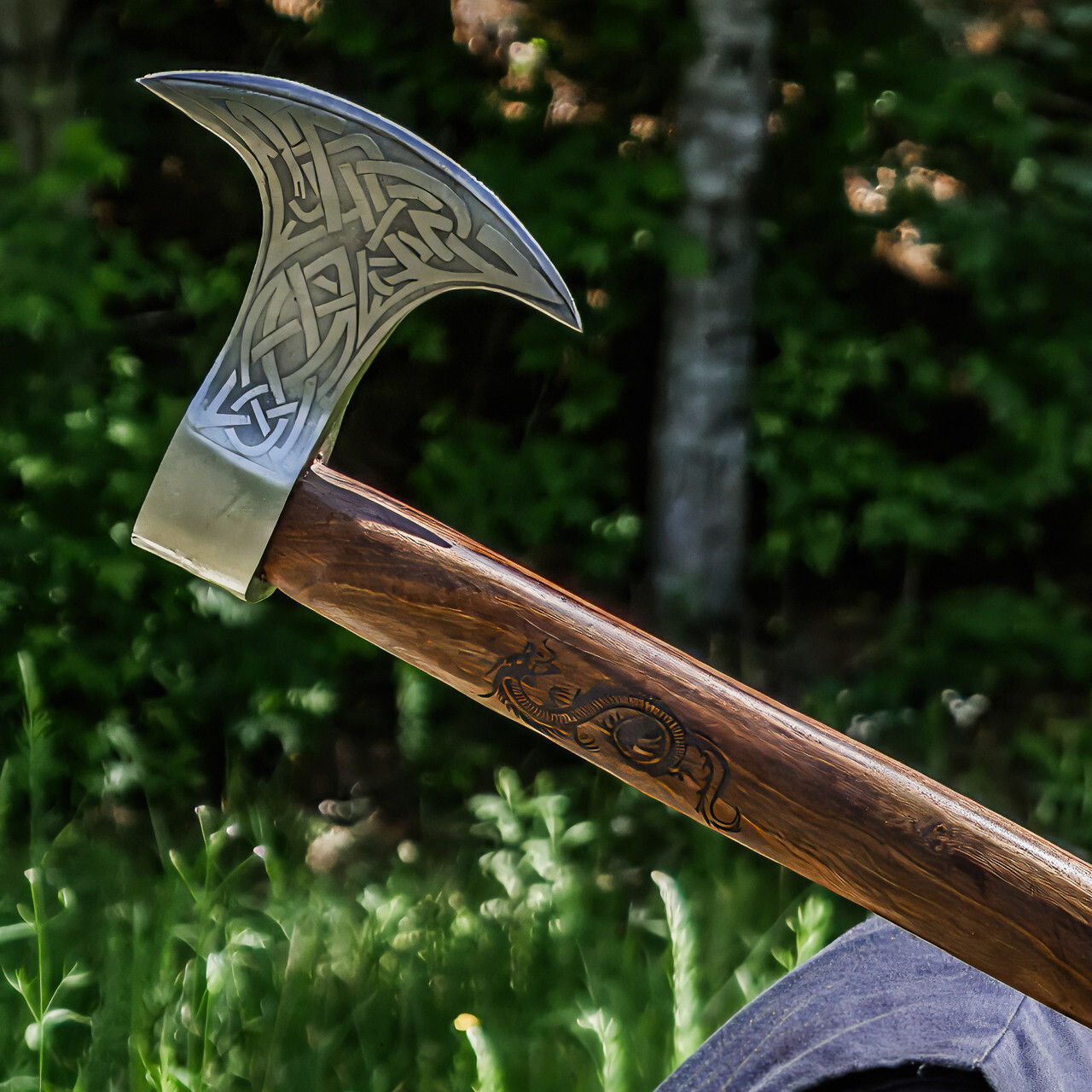How to Properly Sharpen and Maintain Your Medieval Axes
Posted by SwordsSwords on Aug 11th 2025
Owning a medieval axe isn't just about having a cool weapon – it's about connecting with history. But a dull axe is more wall decoration than a fearsome tool. Here's how to properly sharpen and maintain your axe, keeping it battle-ready (or at least reenactment-ready!).
Gather Your Supplies:
- Whetstone (a sharpening stone)
- Honing oil
- Vice (optional, but helpful for holding the axe steady)
- Rag or cloth
Securing Your Medieval Battle Axe:
First things first, safety. If you're using a vice, clamp the Viking throwing axe head firmly in place. Otherwise, wrap the handle securely with a rag or cloth to avoid slipping.
Sharpening Up: Medieval Axes
- Prep the Stone: Apply a few drops of honing oil to the whetstone. This helps the sharpening process and protects the blade.
- The Sharpening Stroke: Hold the axe blade at a consistent angle against the whetstone. With steady, even strokes, draw the blade across the stone, starting from the base and moving towards the tip. Repeat on both sides.
- Finding the Right Angle: The ideal angle depends on the type of axe. Generally, a 20-25 degree angle is a good starting point for most medieval axes. You can experiment slightly to find what works best for your specific axe.
- Feeling the Edge: As you sharpen, regularly check the edge of the blade with your finger (be careful!). You should feel a smooth, slightly raised burr (a tiny rolled-over edge of metal) forming on the unsharpened side. 5. Flipping Sides: Once you've established a burr on one side, flip the axe and repeat the sharpening process on the other side until a burr forms there too.
Medieval Axes: Refining the Edge:
- Switching Sides: Now that you have burrs on both sides, it's time to refine the edge. Use the finer side of the whetstone (if it has one) or a different, smoother whetstone altogether.
- Polishing for Precision: With lighter strokes, keep honing both sides until the burr disappears and you have a smooth, sharp edge.
Maintaining Your Medieval Axe:
Sharpening is just one part of the story. Regularly inspect your Medieval axes for any damage, especially around the handle and where the blade meets the haft (handle). Look for loose rivets, cracks in the wood, or rust on the metal.
- Tightening Rivets: If any rivets are loose, you'll need to replace or re-peen them (hammer them back into place). This can be a tricky task, so consider consulting a blacksmith or experienced reenactor if you're unsure.
- Fixing Cracks: For small cracks in the handle, wood glue and a clamp can often do the trick. However, for larger cracks or compromised structural integrity, it's best to replace the handle entirely.
- Rust Prevention: After any sharpening or cleaning, wipe down the blade with a clean rag and apply a light coat of oil to prevent rust.
The Benefits of Proper Care:
Taking care of your axe isn't just about keeping it looking good. By sharpening and maintaining it properly, you ensure it remains safe to use and performs as intended. A dull axe is not only ineffective but also more dangerous – it's more likely to slip or break during use.
Owning a Legacy:
By following these steps, you're not just maintaining a weapon, you're preserving a piece of history. Your battle axe medieval can be a source of pride and a connection to the past. So, take the time to care for it, and it will reward you with years of service (or at least some impressive displays on your wall!). Now, if you wanna buy a new one then check the collection of the swordsswords.com for the best quality medieval axes for sale.


